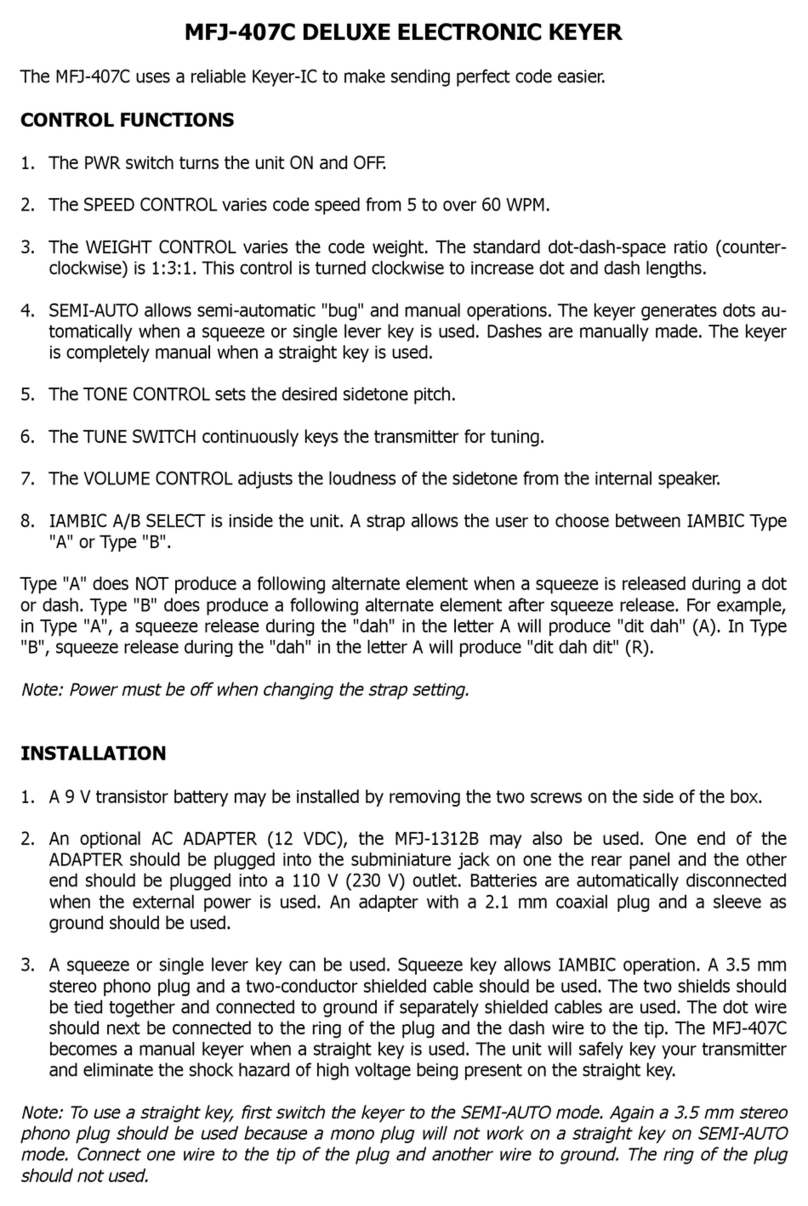REC and MESSAGE 1-4 Buttons
Pressing message buttons 1-4 will play back the corresponding pre-recorded message. The message will be played until it is complete.
Pressing either the dit or dah key paddles will immediately cancel playback of a recorded message.
To record a message:
1) Press the REC button. The LED will blink rapidly.
2) Press a message button (1, 2, 3, or 4) that you wish to record. The LED will come on without blinking.
3) Start sending the message you wish to record with the paddle. The XT-4 will not begin recording until the first dit or dah is sent.
4) Press the REC Button to stop recording. The LED will go out. Press the REC board as soon as possible after you finish sending the
message. This will minimize recording dead time at the end of your message.
Message Recording Notes:
1) The recorded message will be preserved even if you turn off the power.
2) If you accidentally press the REC button and don’t want to record a message, tap the dit or dah paddles before pressing a message
number button. This will cancel the record, and the LED will go out. Or you can power the unit down and then back on.
3) Each message buffer will hold approximately 240 Morse characters. The end of the message will be lost if you try to record past the
limit. Record a new, shorter, message if this happens.
4) Messages are not erased. Simply record over the old message.
Tune Function
You can place the XT-4 in a key down state for tuning with the following procedure:
1) Press and hold the REC button.
2) Press the (message) 2 button. The keyer will now be in tune mode. Release the buttons.
3) Touch either paddle key to exit tune mode.
Programmable Options
The XT-4 MK2 has several configuration options. To change a configuration, you turn off the power, press and hold down one or more
specified buttons and turn the power on. Then release the buttons.
The XT-4 comes preprogrammed with factory set defaults.
Paddle Reverse
You should wire up your paddle so that the dit and dah keys operate the way you are used to. Set reverse to switch the dit and dah
paddles. This is useful at Field Day and other multi-operator events when there are right and left handed operators.
Default: Normal
Set Normal: Power up with the (message) 1 button held down.
Set Reverse: Power up with the REC + (message) 1 buttons held down.
Message 1 Loop
Message 1 can be set to loop. A common use is for CQing. When looping is enabled, pressing the (message) 1 key will send the
message. Aer a few seconds message 1 will repeat. It will repeat unl either the dit or dah key is pressed. You must press
(message)1 again restart the progress.
If the message repeats too soon, record the message again but leave extra me before stopping recording by pressing the REC
buon.
Default: No Loop
No Loop: Power Up with the (message) 2 button held down.
Enable Loop: Power Up with the REC + (message) 2 buttons held down.





















